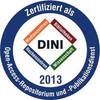In: Wagner, Wolfgang (Hrsg.): 100 years ISPRS advancing remote sensing science : ISPRS Technical Commission VII symposium; 1910 - 2010 centenary celebration Vienna; Vienna, Austria, July 5 - 7, 2010 : Pt. B Papers accepted on the basis of peer-reviewed abstracts. Lemmer, GITC 2010, pp. 281-286 (International archives of photogrammetry, remote sensing and spatial information sciences ; 38/7B)
Preview |
PDF, English
- main document
Download (6MB) | Terms of use |
Abstract
In this paper, a new GIS workflow for fully automated urban vegetation and tree parameter extraction from airborne LiDAR data is presented. The strengths of both raster- and point cloud-based methods are combined, in order to derive a vegetation map layer as well as single tree parameters (e.g. tree height and crown width) in an efficient way. The workflow is implemented in GRASS GIS making use of standard GIS functionality and newly developed tools providing access to point cloud analysis. An edge-based segmentation delineates potential tree crowns, which are further aggregated to single trees or group of trees by using local topological information (e.g. percentage of outline touched by neighbors) and constraints on segment geometry (e.g. shape of segments). Furthermore, the classification makes use of segment attributes that have been extracted from the full-waveform point cloud (e.g. percentage of first echoes, echo width and signal amplitude). A representative study area in the City of Vienna is used to demonstrate the applicability of the developed object-based GIS workflow. Buildings and vegetation objects could be separated with high accuracy, where at maximum 14% of classified vegetation segments confuse with buildings (mainly building edges). Concluding, the unique high density (50 pts/m2) full-waveform LiDAR data open a new scale in 3D object extraction but demanding for novel strategies in object-based raster and point cloud analysis.
| Document type: | Book Section |
|---|---|
| Editor: | Wagner, Wolfgang |
| Title of Book: | 100 years ISPRS advancing remote sensing science : ISPRS Technical Commission VII symposium; 1910 - 2010 centenary celebration Vienna; Vienna, Austria, July 5 - 7, 2010 : Pt. B Papers accepted on the basis of peer-reviewed abstracts |
| Series Name: | International archives of photogrammetry, remote sensing and spatial information sciences |
| Volume: | 38/7B |
| Publisher: | GITC |
| Place of Publication: | Lemmer |
| Date Deposited: | 30 Jul 2025 07:59 |
| Date: | 2010 |
| Page Range: | pp. 281-286 |
| Faculties / Institutes: | Fakultät für Chemie und Geowissenschaften > Institute of Geography |
| DDC-classification: | 550 Earth sciences |
| Uncontrolled Keywords: | Airborne LiDAR, Vegetation mapping, Open source GIS, Object-Based Image Analysis |
| Further URL: |









